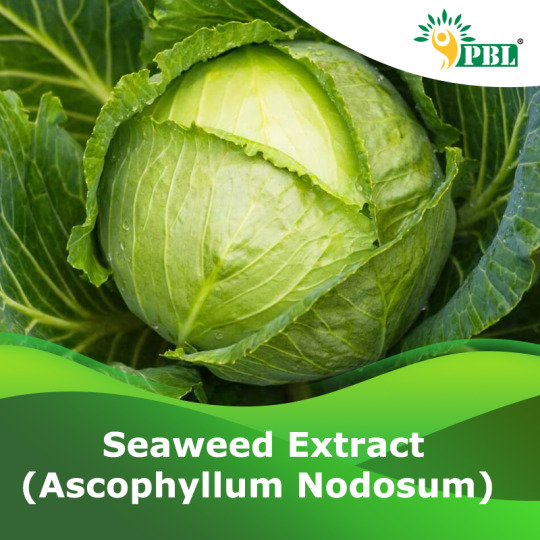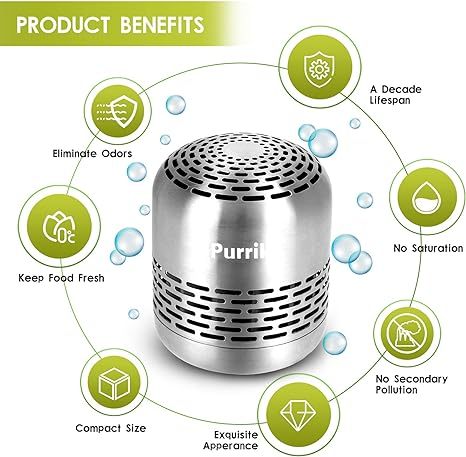#eco-friendly solution
Explore tagged Tumblr posts
Text
Protecting the Planet, 1-One Brush at a Time & Happy BruKon Customers
BruKon is Happily No1: A Powerful Legacy of the Past, Shaping the Future One Brush at a Time with BruKon – making our customers happy to be doing what is only logical At BruKon, we’re tackling a big issue—environmental pollution from paint residues, cleaning fluids, and turpentine. Our solution is simple yet impactful: the BruKon brush cleaning and storage containers. They reduce the excessive…
#Art#Brush#brush saver#cleaning a paint brush#diy#eco-friendly solution#enamel painting#home-improvement#how to clean paintbrushes#innovation#oil paint brush cleaning#oil-painting#one brush#paintbrush#painters&039; tools#professional painters#renovating#time-saver#trade#wet brush containers#wholesale
0 notes
Text
SEAWEED FERTILIZER BENEFITS MANUFACTURER & SUPPLIER | BEST PRICE AVAILABLE - PBL
Peptech Bio is a reliable and cost-effective manufacturer and supplier of seaweed fertilizer. Seaweed fertilizer is a nutrient-rich and eco-friendly solution that can help promote plant growth, aid in disease resistance, and contribute to healthier crops. It enhances soil structure, microbial activity, and fertility, making it ideal for a variety of crops. The appropriate use of seaweed fertilizer can lead to improved crop quality, higher yields, and sustainable farming practices.

#Peptech Bio#seaweed fertilizer#reliable manufacturer#cost-effective supplier#plant growth#disease resistance#sustainable farming practices#eco-friendly solution#higher yields
0 notes
Text
Why Clay Roofs Are the Perfect Choice for Homes in Delhi
In the ever-evolving world of architecture and construction, homeowners in Delhi are seeking roofing solutions that not only enhance the visual appeal of their properties but also provide long-lasting durability and sustainability. One such timeless and eco-friendly solution gaining popularity across residential and commercial projects is the clay roof.
What is a Clay Roof?
Clay roofs are crafted using natural terracotta clay, molded and fired to produce durable roofing tiles. These tiles come in a variety of textures, shapes, and earthy tones, offering a rustic charm and traditional aesthetic that seamlessly complements both heritage and modern architecture.
Benefits of Installing a Clay Roof in Delhi
Weather Resistance: Delhi experiences extreme weather conditions—scorching summers, monsoon rains, and cold winters. Clay tiles are naturally resistant to high temperatures and UV radiation, and their dense structure makes them highly water-resistant, protecting the structure beneath.
Energy Efficiency: Clay roofs provide excellent insulation, keeping homes cooler in summer and warmer in winter. This helps reduce energy bills by minimizing the need for artificial cooling or heating systems.
Eco-Friendly & Sustainable: Made from natural materials, clay roofing tiles are recyclable, non-toxic, and have a low environmental impact during production and disposal.
Longevity: Clay roofing can last for more than 50 years with minimal maintenance. Their strength and ability to resist mold, rot, and insects make them a cost-effective, long-term investment.
Aesthetic Appeal: With their rich, earthy tones and classic appeal, clay tiles can elevate the overall appearance of any structure. They pair beautifully with both traditional Indian homes and contemporary designs.
Ideal Applications
Clay roofs are widely used in villas, heritage buildings, bungalows, resorts, and even commercial properties seeking a classic aesthetic. In Delhi, areas with colonial architecture or modern eco-conscious designs are increasingly turning to clay tile solutions.
Why Choose Blooms India for Clay Roofing?
At Blooms India, we offer a curated range of premium clay roofing tiles that combine traditional craftsmanship with modern technology. Our clay roof solutions are known for their durability, beauty, and performance in extreme weather.
Our team ensures expert installation, high-quality materials, and customer satisfaction at every step of the process.
For more information, please visit: 👉 https://www.bloomsindia.net/cladding.html
#clay roof in delhi#terracotta roof tiles#eco-friendly roofing#clay tile installation#roof cladding delhi#sustainable roofing#traditional roofing solutions#clay roofing tiles supplier#delhi roofing contractors
2 notes
·
View notes
Text
Celebrating Women Who Changed the Earth: A Tribute to Environmental Pioneers

View On WordPress
#Aubrey-Anne Laliberte-Pewapisconias#biodiversity#biodiversity loss#Candace Savage#carbon emissions reduction#Clean Energy#clean environment#Climate Action#climate activists#climate change#climate crisis#climate leaders#climate solutions#community-based conservation#conservation#Conservation Efforts#Conservationists#Dr. Kaminskyj#Earth Day activists#Earth Protection#Eco-Activism#eco-conscious women#eco-consciousness#Eco-friendly solutions#eco-innovations#eco-pioneers#eco-warriors#ecofeminism#ecological balance#ecological footprint
2 notes
·
View notes
Text
Radish Growing Guide: Seed to Table in Just Four Weeks
Radishes are one of the quickest and easiest vegetables to grow, making them perfect for both beginner gardeners and seasoned green thumbs. Whether you’re looking to add a peppery crunch to your salads or a vibrant pop of color to your garden, radishes can go from seed to table in just four weeks. Let's dive into the essentials of growing radishes successfully.
Key Takeaways
Radishes can be harvested in as little as four weeks from planting.
Choose seeds based on the radish variety that suits your climate and taste preference.
Plant radishes in well-drained, loose soil with a pH of 6.0 to 7.0 for optimal growth.
Space seeds 1 inch apart and sow them at a depth of 1/2 inch for best results.
Ensure consistent watering, especially during dry spells, to prevent radishes from becoming woody.
Getting Started with Radishes
Before planting radishes, it's crucial to understand what makes them thrive. Radishes are cool-season crops, which means they prefer the cooler temperatures of spring and fall. They grow best in full sun, but they can tolerate partial shade, especially in warmer climates. Most importantly, radishes require well-drained soil to prevent root rot and other moisture-related issues.
One of the most exciting aspects of growing radishes is their rapid growth rate. With some varieties ready to harvest in just 25 days, they are ideal for gardeners who want quick results. Plus, their short growth period allows for multiple plantings throughout the season.
Choosing the Right Seeds
The first step in your radish growing journey is selecting the right seeds. Radishes come in a variety of shapes, sizes, and colors. From the classic red globe radishes to the elongated white daikon, there's a radish for every palate and garden. When choosing seeds, consider your climate, the space you have available, and your taste preferences.
Here are a few popular radish varieties to consider:
Cherry Belle: A classic round, red radish that matures in about 22 days.
French Breakfast: An oblong radish with a mild flavor, ready in 25 days.
Daikon: A large, white radish often used in Asian cuisine, taking 60 days to mature.
Watermelon Radish: Known for its vibrant pink interior, it matures in 60 days.
Understanding Seed Varieties
Different radish varieties have different growing requirements and flavors. For instance, if you live in a region with a short growing season, opt for faster-maturing varieties like Cherry Belle. Conversely, if you have a longer growing season, you might enjoy experimenting with slower-growing types like Daikon.
Besides that, consider the culinary uses of each variety. While Cherry Belle is perfect for salads and garnishes, Daikon is excellent for pickling and cooking. Knowing the characteristics of each type can help you make an informed decision and ensure a successful harvest.
Best Time to Plant
Timing is everything when it comes to planting radishes. They thrive in cooler temperatures, so aim to plant them in early spring or fall. If you’re planting in spring, sow seeds as soon as the soil is workable. For fall planting, start sowing seeds about four to six weeks before the first expected frost.
One key advantage of radishes is their ability to be succession planted. By sowing seeds every two weeks, you can enjoy a continuous harvest throughout the growing season. This technique is particularly useful for maintaining a steady supply of fresh radishes for your kitchen.
"For a continuous harvest, plant radish seeds every two weeks throughout the growing season."
Optimal Soil Preparation
Preparing the soil properly is crucial for growing healthy radishes. They prefer loose, well-drained soil with a pH between 6.0 and 7.0. Heavy clay soils can impede root development, so consider amending such soils with organic matter or sand to improve drainage.
Before planting, work the soil to a depth of at least 12 inches and remove any rocks or debris that might obstruct root growth. Adding compost or aged manure can enhance soil fertility and support robust radish growth.
Planting Techniques for Success
Once your soil is ready, it's time to plant your radish seeds. Planting radishes is straightforward, but following a few key steps can make all the difference in your harvest.
First, make shallow furrows in the soil, about 1/2 inch deep. Space the rows about 12 inches apart to give the radishes room to grow. Next, sprinkle the seeds evenly along the furrows, aiming for a spacing of about 1 inch between seeds. Cover the seeds lightly with soil and water gently to ensure good soil contact.
Sowing Seeds Correctly
Sowing radish seeds at the correct depth and spacing is essential for healthy growth. If seeds are planted too deep, they may struggle to germinate. Conversely, if they are too shallow, they might dry out or be disturbed by wind and rain.
Once planted, keep the soil consistently moist but not waterlogged. Radishes require regular watering, especially during dry spells, to prevent the roots from becoming woody and bitter.
Spacing and Depth Guidelines
Proper spacing is crucial for radishes to develop fully. If planted too closely, they may compete for nutrients and space, resulting in smaller, less flavorful roots. Therefore, thin seedlings to about 2 inches apart once they have two true leaves. This spacing allows each radish ample room to grow without competition. For more detailed planting advice, consider resources like The Self-Sufficient Backyard.
Timing for the Fastest Growth
Radishes are fast-growing plants, but certain factors can influence their growth rate. For the quickest harvest, plant radishes in full sun and ensure they receive at least six hours of sunlight per day. Additionally, maintaining consistent soil moisture and avoiding extreme temperature fluctuations can help radishes grow rapidly and uniformly.
As radishes mature, keep an eye on their growth. Most varieties are ready to harvest when the roots are about an inch in diameter. Harvesting promptly prevents them from becoming overgrown and woody.
Care and Maintenance
Once your radishes are planted, proper care and maintenance will ensure they thrive and reach their full potential. Radishes are relatively low-maintenance, but they do have specific needs that, when met, lead to a bountiful harvest.
One of the most important aspects of radish care is maintaining consistent soil moisture. Radishes need regular watering, particularly during dry spells, to develop crisp and tender roots. Uneven watering can lead to split or misshapen radishes.
Besides watering, keeping the area around your radishes free of weeds is crucial. Weeds compete for nutrients and space, which can hinder the growth of your radishes. Regularly check your garden beds and remove any weeds by hand or with a hoe, being careful not to disturb the shallow roots of the radishes.
Watering Schedule and Tips
Radishes require about an inch of water per week, whether from rainfall or supplemental watering. It's best to water deeply and less frequently to encourage roots to grow deeper into the soil. This practice also helps prevent the soil surface from drying out too quickly.
Water your radishes in the early morning or late afternoon to reduce evaporation and allow the plants to absorb moisture more effectively. Avoid overhead watering, which can encourage fungal diseases; instead, use a soaker hose or drip irrigation system to deliver water directly to the soil.
Fertilizing for Healthy Growth
Radishes are light feeders, so they typically don't require much fertilization. However, if your soil is lacking in nutrients, a light application of a balanced, slow-release fertilizer can support healthy growth. Apply the fertilizer at planting time or when the seedlings are a few inches tall.
Avoid high-nitrogen fertilizers, as they can promote leafy growth at the expense of root development. Instead, look for fertilizers with a balanced ratio of nitrogen, phosphorus, and potassium, such as a 10-10-10 formula.
Pest and Disease Management
Although radishes are generally hardy plants, they can still fall prey to pests and diseases. Common pests include flea beetles, aphids, and root maggots. To protect your radishes, consider using row covers to create a physical barrier against these pests.
If pests become a problem, try introducing beneficial insects like ladybugs or lacewings to your garden, as they can help control pest populations naturally. For disease management, practice crop rotation and avoid planting radishes in the same spot each year. This helps prevent the buildup of soil-borne pathogens. For more tips on sustainable gardening, consider exploring The Self-Sufficient Backyard.
Additionally, ensure good air circulation around your radishes by not overcrowding your plants. This can help reduce the risk of fungal diseases, such as downy mildew and damping-off.
Harvesting Radishes
Harvesting radishes at the right time is key to enjoying their crisp, peppery flavor. Radishes that are left in the ground too long can become woody and bitter, so it's important to monitor their growth closely. For those interested in sustainable gardening practices, The Self-Sufficient Backyard provides valuable insights.
Most radish varieties are ready to harvest when the roots reach about one inch in diameter. Regularly check your radishes by gently pulling back the soil to expose the tops of the roots. If they appear to be the right size, it's time to harvest!
Signs of Readiness
Besides size, another sign that your radishes are ready to harvest is the appearance of their tops. Healthy radish tops should be vibrant green and firm. If the leaves start to yellow or wilt, it's a sign that the radishes may be past their prime.
Remember, radishes grow quickly, so check them often. Harvesting them promptly ensures the best flavor and texture.
Harvesting Techniques
To harvest radishes, simply grasp the tops of the plants and gently pull them from the ground. If the soil is compacted or the roots are stubborn, use a garden fork to loosen the soil around the plants before pulling.
After harvesting, rinse the radishes under cool water to remove any soil. Trim the tops and roots to about an inch long to help them store better. Freshly harvested radishes can be enjoyed raw, cooked, or pickled.
Post-Harvest Storage Tips
Radishes are best enjoyed fresh, but if you need to store them, there are a few tips to keep them crisp and flavorful. First, remove the tops, as they draw moisture away from the roots. Store the roots in a plastic bag in the refrigerator's crisper drawer.
To keep them crisp, wrap the radishes in a damp paper towel before placing them in the bag. Stored this way, radishes can last up to two weeks. If your radishes become soft, you can revive them by soaking them in ice water for a few hours before using them.
Common Challenges and Solutions
Growing radishes is generally straightforward, but like any crop, they can face challenges. Whether it's slow growth, pest issues, or splitting, understanding these problems and their solutions can help you achieve a successful harvest.
Most importantly, addressing these challenges early can prevent them from affecting your entire crop. Let's explore some common issues and how to overcome them with insights from The Self-Sufficient Backyard.
Addressing Slow Growth
If your radishes are growing slowly or seem stunted, it could be due to several factors. Poor soil quality, inadequate sunlight, and inconsistent watering are common culprits. Ensure your radishes receive at least six hours of sunlight daily and that the soil is well-drained and nutrient-rich.
Additionally, check for signs of overcrowding. Thinning seedlings to the recommended spacing can improve air circulation and reduce competition for resources, encouraging faster growth.
Dealing with Pests Naturally
To manage pests naturally, consider companion planting. Certain plants, like marigolds and nasturtiums, can deter pests and attract beneficial insects. Additionally, rotating crops each season helps prevent pest populations from becoming established.
For an immediate solution, handpicking pests off your plants can be effective, although time-consuming. Regular monitoring and quick action can help keep pest populations under control and protect your radish crop.
Preventing Radish Splitting
Radish splitting often occurs when the plants receive irregular watering, causing them to absorb too much water too quickly. To prevent this, maintain consistent soil moisture throughout the growing season. Avoid allowing the soil to dry out completely between waterings, as this can lead to rapid water uptake when the plants are watered again.
Another factor that can cause splitting is over-maturity. Harvest radishes promptly when they reach the desired size, as leaving them in the ground too long increases the risk of splitting. Regularly checking your radishes and harvesting them at the right time will ensure they remain crisp and intact.
Culinary Uses and Recipes
Radishes are versatile in the kitchen, adding a peppery crunch to a variety of dishes. They can be enjoyed raw, pickled, roasted, or even sautéed. Their vibrant colors and unique flavors make them a delightful addition to both simple and gourmet meals.
Raw in Salads: Thinly sliced radishes add a refreshing crunch to green salads, slaws, and grain bowls.
Pickled: Quick-pickling radishes in vinegar and spices creates a tangy condiment that pairs well with tacos, sandwiches, and charcuterie boards.
Roasted: Roasting radishes mellows their spiciness and brings out their natural sweetness, making them a great side dish.
Sautéed: Sautéing radishes with butter and herbs creates a simple yet flavorful dish that complements a variety of proteins.
Besides these ideas, radishes can also be used as a garnish, adding visual appeal and a hint of spice to dishes like soups and omelets.
Simple Salad Ideas
One of the simplest ways to enjoy radishes is in a salad. For a classic radish salad, thinly slice fresh radishes and toss them with arugula, feta cheese, and a lemon vinaigrette. The peppery radishes and arugula are balanced by the creamy feta and tangy dressing, creating a harmonious blend of flavors.
Incorporating Radishes in Cooked Dishes
Radishes aren't just for raw dishes; they can also be cooked to bring out different flavors. Try roasting radishes with olive oil, salt, and pepper until they're tender and caramelized. Roasted radishes make a delicious side dish for roasted meats or fish.
Alternatively, sauté sliced radishes with garlic and butter for a quick and tasty side. The cooking process softens their texture and mellows their spiciness, resulting in a delightful dish that's sure to please.
Savory Snacks Featuring Radishes
Radishes can also be transformed into savory snacks. For a healthy and flavorful treat, spread a layer of herbed cream cheese on whole-grain crackers and top with thinly sliced radishes. The combination of creamy, crunchy, and spicy elements makes for a satisfying snack that's perfect for any time of day.
Frequently Asked Questions
As you embark on your radish-growing journey, you may have some questions. Here are answers to common queries that can help you cultivate a successful radish crop.
What is the fastest-growing radish variety?
The Cherry Belle radish is one of the fastest-growing varieties, maturing in just 22 to 28 days. Its quick growth makes it a favorite among gardeners looking for a speedy harvest.
How often should I water radishes?
Radishes require consistent moisture, so water them about once a week, ensuring the soil stays evenly moist. During hot or dry spells, you may need to water more frequently to prevent the soil from drying out completely.
When should I plant radish seeds?
Plant radish seeds in early spring as soon as the soil is workable, or in late summer for a fall harvest. Radishes thrive in cool weather, so timing your plantings to avoid the heat of summer will yield the best results.
What are some common pests of radishes?
Common pests that affect radishes include flea beetles, aphids, and root maggots. To manage these pests, use row covers, introduce beneficial insects, and practice crop rotation to reduce pest populations.
Can I grow radishes indoors?
Yes, radishes can be grown indoors in containers. Choose a sunny spot or use grow lights to provide sufficient light, and ensure the containers have good drainage. Indoor-grown radishes may take slightly longer to mature, but they can be a rewarding addition to your indoor garden.
#organic pest control#eco-friendly pest management#sustainable garden practices#natural pest solutions#vegetable garden health#enhancing fruit yield#ecological balance#educational workshops#interactive eco-education#physical removal of nests#sustainable gardening#organic soil#vertical gardening#drip irrigation#solar-powered pond pump#organic seed sourcing#raised beds#self-watering pots#quick-harvest vegetables#arts and crafts gardening#child-friendly garden#seasonal planting#decorative planters#hydroponic systems#urban micro-farming#fresh produce#rainwater collection systems#solar-powered grow lights#square-foot gardening#self-watering planters
2 notes
·
View notes
Text
Understanding Zero Energy Buildings: A Sustainable Solution
Key Points Zero energy buildings produce as much energy as they consume using renewables. They use efficient designs and technologies like solar panels and heat pumps. They’re becoming more common to fight climate change and save energy costs. What Are Zero Energy Buildings? Zero energy buildings are structures designed to have no net energy consumption over a year. This means they generate…
#Building Performance#Clean Energy Solutions#climate-change#Eco-Friendly Buildings#energy#Energy Efficiency#Environment#Environmental Engineering#Green Building Design#Renewable Energy#sustainability#Sustainable Architecture#Sustainable Construction#Zero Energy Buildings
2 notes
·
View notes
Text
Solar Water Heater Incentives: Save Money While Saving the Planet
Unlocking Solar Water Heater Incentives: Save Money While Saving the Planet
Solar water heater incentives are revolutionizing how households and businesses think about energy consumption. With rising energy costs and increasing environmental awareness, transitioning to solar-powered systems has become more attractive than ever. This comprehensive guide explores various incentives available, their benefits, and how you can leverage them to reduce costs and environmental impact.
Why Solar Water Heater Incentives Matter
Switching to solar water heaters offers significant benefits, but the initial investment can be steep. Incentives make it more affordable by reducing upfront costs and improving long-term returns. Governments and private organisations are pushing these initiatives to encourage sustainable energy adoption, driving a greener future.
Benefits of Solar Water Heater Incentives
Cost Reduction: Incentives lower the high initial costs of solar water heater installation.
Energy Savings: Decreased reliance on electricity reduces monthly utility bills.
Environmental Impact: Reducing fossil fuel dependence cuts greenhouse gas emissions.
Tax Credits and Rebates: Enjoy financial rewards through government programs.
Types of Solar Water Heater Incentives
Solar water heater incentives vary across regions and sectors, targeting homeowners, businesses, and even non-profit organisations. Let’s dive into the most common types:
Solar Water Heater Incentives
1. Federal Tax Credits
Federal governments often provide tax credits for installing solar water heating systems. In the U.S., for example, the Investment Tax Credit (ITC) allows homeowners to deduct a percentage of the system cost from their taxes.
Key Feature: Covers up to 30% of installation costs.
Eligibility: System must meet specific efficiency standards.
2. State-Level Rebates
Many states offer rebates as an additional incentive. These rebates can significantly reduce installation costs and vary depending on the region.
Example: California’s Solar Thermal Rebate Program.
Tip: Check local energy department websites for details.
3. Utility Company Incentives
Several utility companies offer rebates or special rates for customers adopting solar water heating systems.
Example: Discounts on equipment or installation services.
Pro Tip: Contact your utility provider to explore options.
4. Grants for Non-Profits and Businesses
Non-profit organisations and commercial entities can benefit from grants aimed at promoting renewable energy adoption.
Noteworthy Program: U.K.’s Renewable Heat Incentive (RHI).
How to Apply: Submit a detailed proposal outlining energy savings.
5. Financing Options
Low-interest loans and leasing options make solar water heating systems more accessible. Some governments collaborate with financial institutions to provide these facilities.
Eligibility Criteria for Solar Water Heater Incentives
Understanding eligibility is crucial to maximising benefits. Here’s what you need to know:
Energy Efficiency Standards: Systems must meet local energy efficiency guidelines.
New Installations Only: Most programs do not cover retrofits.
Residential vs. Commercial: Separate incentives exist for each category.
Application Deadlines: Ensure timely submissions to avoid missing out.

Step-by-Step Guide to Claiming Incentives
Navigating the process of claiming solar water heater incentives can be daunting. Follow these steps for a hassle-free experience:
Step 1: Research Incentives in Your Area
Use online tools or consult local authorities to identify available programs.
Tip: Websites like DSIRE provide a comprehensive database of U.S. incentives.
Step 2: Choose the Right System
Ensure your chosen solar water heating system meets eligibility criteria for efficiency and quality standards.
Step 3: Hire Certified Installers
Work with licensed professionals to avoid disqualification from incentive programs.
Tip: Ask your installer about relevant certifications.
Step 4: Submit Your Application
Complete necessary paperwork and submit supporting documents, such as proof of purchase and installation.
Step 5: Monitor Approval and Reimbursement
Track your application status and follow up as needed. Reimbursements typically arrive within a few months.
Call : +91 9364896193, +91 9364896194 Jupiter solar to buy solar water heater
Top Programs Offering Solar Water Heater Incentives
1. Residential Renewable Energy Tax Credit (U.S.)
Covers 30% of installation costs.
Available for both primary and secondary residences.
2. Canada’s Greener Homes Initiative
Provides grants up to CAD 5,000.
Supports energy-efficient home upgrades.
3. Australia’s Small-Scale Technology Certificates (STCs)
Encourages renewable energy adoption.
Reduces upfront costs by offering tradable certificates.
4. European Union Renewable Energy Grants
Wide-ranging incentives under EU Green Deal.
Focused on reducing carbon footprints.
Common Misconceptions About Solar Water Heater Incentives
1. Too Complex to Apply
Many believe the process is overly complicated. In reality, most programs offer clear guidelines and support.
2. Limited Availability
Contrary to popular belief, incentives are widely available, covering diverse regions and sectors.
3. Only for Large Systems
Incentives cater to systems of all sizes, from residential to industrial setups.
Maximising Your Savings
To get the most out of solar water heater incentives, consider the following:
Bundle with Other Programs: Combine federal, state, and utility incentives.
Perform Regular Maintenance: Ensure your system operates efficiently to maximise savings.
Educate Yourself: Stay updated on new programs and eligibility changes.
Solar Water Heater Incentives
1. What is the average cost of a solar water heating system?
The cost typically ranges from $3,000 to $7,000, depending on system size and complexity.
2. How much can I save with incentives?
Savings vary but can cover 20-50% of total installation costs.
3. Are solar water heaters eligible for net metering?
No, net metering generally applies to solar photovoltaic systems, not solar water heating systems.
4. Can I apply for multiple incentives?
Yes, you can combine federal, state, and local incentives to maximise benefits.
Conclusion: Your Path to a Sustainable Future
Solar water heater incentives are a game-changer for anyone looking to adopt renewable energy. By reducing costs and offering financial rewards, these programs make sustainability more achievable for households and businesses alike. Take advantage of these opportunities to save money while contributing to a greener planet.
Ready to make the switch?
#solar water heater#solar energy#bangalore#india#solar#solar water heaters#solar water heating#bengaluru#solar heater#water#solar water heater incentives#solar energy benefits#renewable energy savings#federal tax credits#state rebates#utility company incentives#green energy#energy efficiency#solar water heater programs#sustainable living#solar water heating systems#eco-friendly energy solutions#tax credits for solar#solar incentives guide#renewable heat incentive#affordable solar options#save with solar#solar energy for homes#go green with solar#reduce energy costs
2 notes
·
View notes
Text
Eco-Friendly Modular Kitchen Accessories for a Greener Home

Discover eco-friendly modular kitchen accessories that promote sustainability. Transform your kitchen into an efficient, greener space.
#Modular Kitchen Accessories#Modern modular kitchen accessories#eco-friendly modular kitchen accessories#Efficient waste management#Pull-out waste segregation systems#plastic drawer organizers#bamboo cutlery trays#Energy-efficient LED lighting#cabinets and drawers#countertop compost bin#Multi-tiered pull-out pantry units#Eco-friendly faucets#Solar-powered appliances#modern kitchen#kitchen accessories#reusable storage containers#sustainable kitchen solutions
2 notes
·
View notes
Text
Navratri is one of the most vibrant and widely celebrated festivals in India which depicts the triumph of good over evil. However, with the increasing issues on the environment, people are becoming more conscious of enjoying festivals in an eco-friendly manner. A green Navratri does not require a compromise on traditions and can make the importance of this festival even more by respectfully paying homage to culture as well as to the Earth. Here’s a list of practical, meaningful ways of celebrating zero-waste Navratri:
3 notes
·
View notes
Text

Why Hygienix Hospitality is the Leading Supplier for Housekeeping Materials
In today’s fast-paced world, maintaining cleanliness and hygiene is a top priority for businesses across various sectors, especially in hospitality, healthcare, and corporate environments. For such establishments, having reliable and high-quality housekeeping materials is essential. One company that stands out in providing these critical supplies is Hygienix Hospitality.
With a strong reputation for delivering premium quality housekeeping products and excellent customer service, Hygienix Hospitality has become a leading supplier for housekeeping materials in India. This blog will explore the reasons why Hygienix Hospitality is the top choice for housekeeping supplies, how they meet industry needs, and what sets them apart from the competition.
#Hospitality Supplies#Hotel Amenities#Hygiene Products#Eco-Friendly Solutions#Guest Experience#Hospitality Industry#Personal Care Products#Sanitization Solutions#Hotel Management#Room Supplies#Health & Safety#Sustainable Practices#Cleaning Supplies#Guest Services#Professional Hygiene
2 notes
·
View notes
Photo

20 Bamboo Drinking Straws Set with Carry Bag & Cleaning Brush
Introducing our 20cm Bamboo Straw Set, the perfect eco-friendly alternative to plastic straws. This set includes 20 reusable bamboo straws, a convenient carry bag, and a coconut husk cleaning brush. Say goodbye to single-use plastics and join the sustainable movement!
Made from natural bamboo, these straws offer a smooth sipping experience while being kind to the environment. With a length of 20cm, they fit various drinkware, ensuring you can enjoy your favourite beverages hassle-free.
The included carry bag makes it easy to take your bamboo straws with you wherever you go. Whether it's a picnic, a coffee shop, or a family gathering, you'll always have your eco-friendly straws on hand.
Cleaning the straws is a breeze with our coconut husk cleaning brush. It effortlessly removes any residue, ensuring your straws remain fresh and hygienic. These straws are reusable and can last up to a year with proper care.
When it's time to dispose of them, you can rest assured knowing that bamboo is a naturally biodegradable material. Simply compost them, and they will break down naturally, leaving no harmful traces behind.
Make a small change that has a big impact with our Bamboo Straw Set. Join the movement towards a greener future and enjoy guilt-free sipping.
#Assistive bamboo straws for disabilities#Inclusive drinking utensils#Eco-friendly bamboo straws#Durable bamboo straws for disabilities#Sustainable drinking straws#Eco-conscious drinking options#Reusable bamboo straws#Ergonomic bamboo straws#Biodegradable straws#Long-lasting straws for disabled individuals#Bamboo straws for disabled individuals#Sustainable alternatives for disabled people#Disability-friendly straws#Eco-friendly assistive drinking devices#Assisted drinking aids#Adaptive bamboo straws#Accessible drinking solutions
3 notes
·
View notes
Text
Bru Kon is No1: A Smarter, Happier & Greener Way to Clean & Store Paint Brushes
BruKon: A Smarter, Greener Way to Clean and Store Paint Brushes Join the Global Movement to Reduce Waste and Protect Our Planet Based on available data, the environmental impact of neglected paint brushes is both alarming and avoidable. In North America alone, over 300 million paint brushes are discarded annually—many of them due to improper cleaning and storage. That’s millions of tools,…

View On WordPress
#best paintbrush cleaner#Brush#container for paint brush#D-I-Y#distributor#easy brush cleaning#eco-friendly solution#enamel paints#home-improvement#less waist#paint brush container for cleaning#sustainable-solution#time and money saver#trade#wet brush containers#wet brush system#wholesale
0 notes
Text
Why Scrub Cleaning Is Essential for Your Workplace in Melbourne, Australia
Maintaining a clean and healthy workplace environment is crucial for businesses in Melbourne, Australia. Cleanliness contributes to the health and safety of employees, improves productivity, and enhances a company's image. With Melbourne's growing business environment, workplaces ranging from offices to industrial sites must ensure a high standard of cleanliness. One of the best ways to achieve this is through professional scrub cleaning. This article will explore why scrub cleaning is essential for your workplace in Melbourne and the benefits it brings.

1. Ensuring Health and Safety in the Workplace
In Melbourne, businesses must comply with workplace health and safety regulations to protect employees from harmful conditions. Dirt, dust, bacteria, and allergens can accumulate in office spaces, warehouses, or retail environments, posing health risks to staff and customers. Professional scrub cleaning helps eliminate these contaminants, keeping surfaces like floors, walls, and workstations free from germs.
A clean workplace minimizes the risk of respiratory problems, allergies, and illnesses like the flu or cold. These can spread rapidly in an unclean environment, leading to more sick days and decreased productivity. Regular scrub cleaning reduces the number of germs, bacteria, and allergens present, which improves indoor air quality and ensures a healthier work atmosphere.
2. Boosting Employee Productivity
The appearance and cleanliness of a workspace directly affect employee morale and productivity. An untidy or dirty environment can lead to distractions, discomfort, and stress, while a clean, organized space encourages focus, efficiency, and creativity. In Melbourne, where industries like finance, education, and retail thrive, high levels of productivity are essential for businesses to stay competitive.
Scrub cleaning is a thorough method that ensures all areas, including hard-to-reach corners and high-traffic zones, are deeply cleaned. By maintaining a clean environment, employees are more likely to take pride in their workspace, which can contribute to better performance and overall job satisfaction.
3. Improving Company Image and Client Perception
First impressions matter, especially for businesses in Melbourne’s bustling economy. Clients, partners, and potential customers judge a business not just by its products or services, but by the environment it operates in. An unclean workplace can give off a negative impression, suggesting disorganization, lack of professionalism, or negligence.
Scrub cleaning ensures that your workplace looks spotless and well-maintained, creating a welcoming and professional atmosphere for anyone who visits. This is especially important in industries like retail, hospitality, and real estate, where customers regularly interact with the business environment. A clean, polished workspace can make clients feel more comfortable, confident, and inclined to do business with you.
4. Extending the Lifespan of Office Equipment and Infrastructure
Dust, dirt, and grime can cause wear and tear on office furniture, carpets, and electronic equipment. In Melbourne's fluctuating climate, this build-up can happen quickly, especially in areas with high humidity or near the city’s busy industrial districts. Floors, especially, are susceptible to damage from heavy foot traffic and spills, which can result in costly repairs or replacements if not properly cleaned and maintained.
Scrub cleaning goes beyond the surface, removing built-up dirt and grime that can deteriorate materials over time. This not only helps extend the lifespan of your office equipment, furniture, and floors but also saves your business money in the long run by reducing the need for frequent replacements or deep restoration services.

5. Meeting Environmental Standards and Promoting Sustainability
In Melbourne, there is increasing awareness about the importance of environmental sustainability. Many businesses are adopting green practices to reduce their environmental footprint and meet local regulations. Scrub cleaning can play a role in supporting sustainability efforts, especially when using eco-friendly cleaning products and methods.
Professional cleaning services in Melbourne are often equipped with environmentally friendly cleaning solutions that are non-toxic and biodegradable, ensuring that your workplace remains safe for employees while minimizing harm to the environment. This not only helps in reducing water and chemical waste but also promotes a healthier workplace for everyone involved.
6. Reducing Workplace Accidents and Liability
Workplace accidents, such as slips, trips, and falls, are among the most common causes of injuries in office and industrial environments. In Melbourne, businesses are legally obligated to ensure the safety of their employees and customers. Dirty or wet floors, cluttered spaces, and unsanitary conditions can increase the likelihood of accidents, which can lead to costly lawsuits and insurance claims.
Scrub cleaning ensures that floors are thoroughly cleaned and maintained, reducing the chances of accidents caused by slipping or tripping. Regular cleaning of high-traffic areas such as hallways, stairwells, and entrances helps to keep these spaces safe for employees and visitors. By maintaining a clean and hazard-free environment, businesses can avoid liability issues and ensure compliance with workplace safety regulations.
7. Customized Cleaning Solutions for Different Industries
Melbourne is home to a diverse range of industries, from healthcare and education to manufacturing and hospitality. Each industry has unique cleaning requirements, and scrub cleaning services can be customized to meet these specific needs. For example:
Healthcare facilities: Require deep cleaning and disinfection to prevent the spread of infections and ensure a sterile environment.
Retail stores and restaurants: Need frequent cleaning of floors and high-contact surfaces to maintain a hygienic and pleasant atmosphere for customers.
Industrial sites and factories: Often deal with oil, grease, and other heavy contaminants that require specialized cleaning solutions to maintain cleanliness and safety.
By working with professional scrub cleaning services, businesses can develop a tailored cleaning plan that addresses their industry’s specific needs and maintains the highest standards of cleanliness.
8. Saving Time and Allowing Focus on Core Business Activities
One of the most significant advantages of outsourcing scrub cleaning to professionals is that it frees up your team to focus on their core tasks. Instead of dedicating time and energy to managing in-house cleaning efforts, businesses can rely on experienced cleaning professionals who use advanced equipment and techniques to get the job done efficiently.
For companies in Melbourne, where business hours can be hectic, having a professional cleaning service take care of scrub cleaning ensures that the workplace remains clean without disrupting daily operations. This not only boosts efficiency but also allows employees to focus on what they do best, ultimately contributing to the company’s success.
9. Supporting Melbourne’s Local Cleaning Industry
By choosing professional scrub cleaning services based in Melbourne, businesses also contribute to the local economy. Supporting local companies helps generate jobs and strengthens the community, creating a positive economic impact. Melbourne is home to many skilled cleaning professionals who are familiar with the city's unique climate and environmental challenges, making them well-equipped to handle workplace cleaning needs effectively.
Conclusion
In conclusion, scrub cleaning is not just about keeping your workplace looking good; it’s an essential service that ensures the health, safety, and productivity of your employees while enhancing your company’s image. For businesses in Melbourne, Australia, where cleanliness and professionalism are key to success, investing in regular scrub cleaning is a smart decision that can yield significant benefits.
From improving indoor air quality to extending the lifespan of office equipment and reducing workplace accidents, scrub cleaning offers numerous advantages that make it an essential part of any workplace maintenance plan. Whether you run an office, retail store, or industrial facility, maintaining a clean environment is crucial to fostering a positive work atmosphere and staying competitive in Melbourne's dynamic business landscape.
For more information and updates, visit our Facebook page or check out our official website.
Our Website Page - https://scrubclean.com.au/
#commercial cleaning#Scrub cleaning services in Melbourne#Health and safety in the workplace#Commercial cleaning in Melbourne#Importance of clean work environment#Office cleaning services in Melbourne#Boost employee productivity with clean workspace#Eco-friendly cleaning solutions in Melbourne#Reduce workplace accidents with cleaning#Melbourne business cleaning services#Extend office equipment lifespan with cleaning#Client perception and cleanliness#Customized cleaning solutions for industries#Scrub clean#melbourne
2 notes
·
View notes
Text

E Rickshaw Loader: Affordable and Efficient Solutions
Looking for an eco-friendly and cost-effective transportation solution? The e rickshaw loader is the answer. These versatile vehicles have revolutionized urban logistics with their affordability and efficiency. Understanding the e rickshaw loader price is crucial for businesses and individuals seeking to invest in this sustainable technology.
The e rickshaw loader price varies depending on several factors, including the features and battery capacity. Basic models are more affordable, while premium versions with extended battery life and advanced features might cost more. Despite the initial investment, the low running and maintenance costs make e rickshaw loaders a smart choice.
Additionally, government incentives and subsidies for electric vehicles can significantly reduce the e rickshaw loader price, making them even more accessible. These incentives aim to promote green transportation and reduce urban pollution, aligning with global sustainability goals.
Investing in an e rickshaw loader not only supports environmental conservation but also offers practical benefits like reduced fuel costs and lower maintenance expenses. As cities continue to embrace green technology, the demand for e rickshaw loaders is expected to rise, making now the perfect time to understand and leverage the best e rickshaw loader options.
#E Rickshaw Loader#E Rickshaw Loader Price#E Rickshaw Price in India#Electric Rickshaw Loader#Eco-friendly Transportation India#Affordable E Rickshaw#E Rickshaw Subsidies India#Green Transportation India#Urban Logistics Solutions#Cost-effective E Rickshaw#Low Maintenance E Rickshaw#Electric Vehicle Incentives India#Sustainable Transport India#E Rickshaw Battery Capacity#Urban Pollution Reduction#Electric Cargo Vehicles India#Indian E Rickshaw Market#E Rickshaw Loader Investment#Government Subsidies Electric Vehicles#Green Technology India
2 notes
·
View notes
Text

Highly Effective Refrigerator Deodorizer Review: Say Goodbye to Fridge Odors!
Check Out Now:
Rating: 4.5 out of 5 stars
As a diligent homemaker, I’m always on the lookout for products that simplify my kitchen maintenance routine. The Refrigerator Deodorizer has been a game-changer in my household, effortlessly tackling stubborn odors and keeping my fridge smelling fresh for up to 10 years!
Firstly, let’s talk about effectiveness. This little powerhouse of a deodorizer lives up to its promises. No more unpleasant smells lingering in my refrigerator! Whether it’s the remnants of last night’s seafood dinner or the forgotten leftovers, this deodorizer swiftly eliminates odors, leaving behind a clean and refreshing scent.
What sets this deodorizer apart from other solutions like baking soda and bamboo air purifying bags is its longevity. With a lifespan of 10 years, it offers unmatched value for money. Gone are the days of constantly replacing deodorizing agents or worrying about their effectiveness wearing off.


Buy Mow 11% Off
Click Here:
Related Items:
#Refrigerator Deodorizer#Lasts for 10 Years#Refrigerator Odor Eliminator#Fridge Deodorizer#Long-lasting deodorizer#Odor control for fridge#Eliminates refrigerator odors#Effective fridge odor remover#Superior to baking soda#Outperforms bamboo air purifying bags#Extended odor protection#Sustainable deodorizing solution#Eco-friendly fridge freshener#Long-term odor control#Advanced odor elimination technology#Permanent fridge odor solution#Low-maintenance refrigerator deodorizer#Powerful odor-absorbing properties#Convenient fridge odor neutralizer#Odor-free refrigerator solution#sales
2 notes
·
View notes
Text
Why I Made the Switch to Step One
I have recently had the pleasure of trying out Step One. This is why you might want to make the switch.
Whether you are a boxer, briefs, or “going free” type of guy, there is no doubt that many of us can do more to protect our bits. Thankfully, some innovations are coming out in the men’s underwear space, and they have truly changed the game. I have recently had the pleasure of trying out the frontrunner, Step One and they are right when they say that “once people try Step One they will want to…

View On WordPress
#3D pouch design#Active lifestyle support#Anti-bacterial#Anti-fungal properties#Chafing solution#Closed water system usage#Comfort and fit focus#Community support#Eco-friendly apparel choice#Environmental sustainability#Ethical production standards#Fair wages#Fashion Forever Green Pact signatory#Local community benefits#Men&039;s underwear innovation#Moisture-wicking#Multiple wear benefits#Protection against plant and animal harm#Rapid bamboo growth#Reduced environmental impact#Species protection#Step One review#Sustainable manufacturing practices#Ultraglyde panel feature#Underwear drawer overhaul#Zero deforestation commitment
4 notes
·
View notes